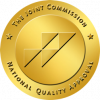Many adolescents experience troubling thoughts sometimes, or get fixated on having things a certain way. Teens might worry about family members getting sick, obsess over a big test or an awkward social interaction, or need things organized in their rooms just so. But if a teenager is having trouble sleeping, completing schoolwork, or doing everyday tasks due to their distressing thoughts and behaviors, they might be struggling with teen OCD.
While it’s sometimes mistaken for perfectionism or germaphobia, obsessive-compulsive disorder (OCD) is a serious mental health condition that is typically diagnosed in adolescence. It can cause extreme distress and anxiety and interfere with every aspect of a teen’s daily life. To achieve long-term healing from OCD, teens need treatment that does more than provide temporary relief from obsessions and compulsions.
To avoid relapse, teens need comprehensive care that addresses both OCD and related mental health conditions. That’s why Newport Academy’s OCD programming for adolescents not only incorporates Exposure and Response Prevention (ERP) therapy—considered the gold standard of care for OCD—it also addresses co-occurring disorders, such as trauma/PTSD, depression, and generalized anxiety disorder. In addition, our OCD and anxiety program addresses common issues that occur alongside the disorder, such as severe social anxiety, body dysmorphia, agoraphobia, trichotillomania, and panic disorders.
To ensure sustainable recovery, our individualized teen treatment plans for OCD include a wide variety of modalities, delivered by a multidisciplinary treatment team. Each teen’s treatment plan for OCD includes 4.5 hours daily of ERP therapy, in addition to psychiatric care and medication management, clinical modalities like EMDR and Dialectical Behavioral Therapy, family therapy, experiential activities like art and music therapy and outdoor adventures, and a robust academic component.
We also offer OCD programming for young adults ages 18–35, through our sister program, Newport Institute.
What Is Obsessive-Compulsive Disorder?
Obsessive-compulsive disorder is classified as an anxiety disorder, because the symptoms of OCD can create extreme anxiety. OCD is characterized by disturbing and unwanted thoughts, images, or urges, accompanied by compulsive and repetitive behaviors.
OCD in children and teens creates intense anxiety and distress. Teen OCD negatively impacts all areas of an adolescent’s life, including schoolwork, friendships, family relationships, teen romantic connections, and daily functioning.
How Common Is OCD?
Obsessive-compulsive disorder (OCD) affects about 1 in every 50 people in the United States, according to the National Institute of Mental Health (NIMH). People are most likely to be diagnosed with OCD during the late teen years.
In general, OCD in children is diagnosed before age 19, and 25 percent of cases are diagnosed by age 14. Once a person reaches young adulthood, the risk of developing OCD decreases. Males are more likely to be diagnosed with OCD during childhood. But the likelihood of OCD in teen girls and teen boys is about the same once they go through puberty.
“When I walked into Newport, I did not expect to overcome so many fears. My OCD was horrible and my self-esteem was at its lowest. I would obsess every single day without stopping. Thanks to Newport, I was able to increase my self-esteem, decrease my OCD, and understand my family. After only two months, it feels like my whole life has evolved into something new. For anyone scared to start, it will be worth your time. You’ll meet the best people and you’ll become your best self.”
Yousif A., Newport alum
Symptoms of OCD in Teens: Obsessions and Compulsions
Obsessions and compulsions are the primary symptoms of OCD in adolescence. OCD obsessions include disturbing images and intrusive, unwanted thoughts that create extreme anxiety and distress.
Compulsions, also called OCD rituals, are repetitive thoughts and/or behaviors that teens with OCD engage in as a response to their obsessions. By repeating a thought or behavior a certain number of times, ordering things in a very specific way, or otherwise obeying a set of rigid rules, they attempt to “cancel out” the distressing feelings.
OCD Obsessions
OCD sufferers become fixated on specific fears or aversions that continually plague them. Common OCD obsessive thoughts include:
- Fear of being unsafe or getting sick; aversion to germs or dirt
- Taboo thoughts about sex and violence
- Aggressive thoughts toward oneself or other people
- Worrying about your own or a loved one’s safety
- Wondering about their sexual orientation or gender identity
- Concern about environmental contaminants, such as asbestos
- Obsession with household chemicals, such as cleaners and solvents
- Being afraid they will blurt out obscenities or insults
- Dread of hurting someone by accident
- Needing to have objects arranged in a particular way, or actions taken in a specific order
OCD Compulsions
Compulsions are an irrational reaction to OCD-related fears and obsessions. In general, OCD compulsions fall into one of four types of OCD behaviors: checking, contamination/mental contamination, hoarding, and rumination/intrusive thoughts. Examples of these compulsive behaviors include:
- Repeatedly checking switches and locks—e.g., that a door is locked or light is off
- Checking one’s physical condition or body parts again and again
- Rereading, rewriting, or repeatedly checking homework assignments
- Repeating routine activities, such as going in and out of a door
- Excessive handwashing and cleaning
- Arranging and ordering things in a very specific way, such as eating foods in a specific order
- Compulsive counting
- Chewing each bite a certain number of times on each side of the mouth
- Doing tasks in multiples, such as opening a door or closing a door three times
Signs of OCD in Teenagers
Parents might notice the following signs of OCD in teens who are experiencing obsessions and compulsions:
- Trouble sleeping due to obsessive imaginings and intrusive thoughts
- Taking an excessive amount of time to complete homework, due to starting over repeatedly or rechecking all the answers
- Needing to check lights, doors, and windows before leaving the house
- Repeated handwashing, sometimes to the point that their skin becomes raw and bleeds
- Substance misuse—using drugs or alcohol as a way to cope with the distress caused by OCD symptoms
- Tic disorder, such as repeatedly blinking, shrugging, or throat-clearing
Causes of OCD in Teenagers
There are a variety of factors that increase the likelihood of developing OCD in adolescence, including:
Trauma and Stress
Teens who have experienced childhood trauma, such as physical abuse, sexual abuse, or the loss of a parent, have a higher risk of developing OCD. Other types of stressful events can also catalyze OCD or make symptoms worse. In fact, obsessive-compulsive disorder and post-traumatic stress disorder (PTSD) symptoms can appear similar. But obsessive PTSD thoughts usually focus on the past event, while OCD thoughts focus on avoiding future dangers related to the trauma.
Genetics
As with other types of mental illness, teenagers whose parents or other family members suffer from OCD are more likely to develop the disorder. While researchers know that a family history of OCD increases the risk, they have not yet identified a specific gene related to obsessive-compulsive disorder.
Brain Abnormalities
Research shows that obsessive-compulsive disorder may be linked to abnormal structures or function in the frontal cortex and subcortical areas of the brain. Hence, the brains of OCD patients respond to “error messages” in the neural network rather than heeding the brain’s signals to stop their behaviors.
PANDAS
Pediatric Autoimmune Neuropsychiatric Disorders Associated with Streptococcal Infections (PANDAS) is an autoimmune response to a strep infection. This infection then affects brain cells, which can result in tics and other OCD symptoms.
Diagnosing OCD in Teens
To diagnose OCD, a full assessment by a mental health professional, such as a child psychiatrist or other clinician, is necessary. An OCD screening will likely include:
- Physical exam to rule out physiological issues that might be causing a child’s symptoms
- Psychological evaluation in which teens and their parents answer questions about the child’s potential OCD symptoms, including thoughts, feelings, and behaviors
- Determination of whether the adolescent meets the OCD criteria from the American Psychiatric Association’s Diagnostic and Statistical Manual of Mental Health Disorders (DSM-5)
- Assessment for co-occurring mental health disorders that can go hand in hand with OCD, such as substance use disorder, disordered eating behaviors, trichotillomania (hair pulling), excoriation (skin-picking disorder), depression, and panic attacks
- Recommendations for approaches to treating OCD
- Discussion of medication that may be effective for teen OCD, such as selective serotonin reuptake inhibitors
Newport Academy provides teen mental health assessments for OCD and anxiety, at no charge. Contact us today to set up an appointment at one of our nationwide locations or virtually.
Newport Academy’s Approach to Treating OCD in Teens
Newport Academy’s teen OCD treatment is specialized for primary OCD, as well as other disorders on the OCD spectrum and severe teen anxiety disorders. These include trichotillomania (hair pulling), body dysmorphia, severe general anxiety and social anxiety, agoraphobia, and panic disorders.
Our integrated approach to care provides every teen and their family members with comprehensive, multidisciplinary support. At intake, teen OCD patients receive a comprehensive psychiatric assessment that informs a tailored treatment plan. This customized plan to treat OCD addresses every aspect of the teenager’s well-being—physical, mental, emotional, relational, social, and educational. Treatment plans cover medication recommendations and physical health needs in addition to therapeutic schedules and goals.
Each adolescent’s individualized OCD treatment plan includes a combination of the following modalities and approaches:
Exposure and Response Prevention (ERP) Therapy
ERP is a form of Cognitive Behavior Therapy that helps to reduce compulsive behaviors. In the last few decades, the development of ERP has shifted the success rates of OCD treatment from poor to very good. In ERP therapy, individuals gradually face their OCD obsessions without using compulsive behaviors to deal with their anxiety. Over time, they learn to trust that the anxiety will lessen without the compulsions. In addition, they learn skills for controlling the habitual compulsions.
Newport Academy’s teen OCD programming incorporates 4.5 hours of ERP therapy each day, five days a week, delivered in both group and individual formats, as well as daily exposure homework.
Cognitive Behavioral Therapy (CBT)
Cognitive Behavioral Therapy is proven to support teens to heal from underlying causes and symptoms of adolescent OCD. Teenagers learn to recognize the error messages their brain is sending, and develop new ways of responding to them. Furthermore, teens learn to reframe obsessive thoughts toward more rational and realistic ways of thinking. Studies show that up to 70 percent of people with OCD experience significant improvement following treatment with CBT.
Psychiatric Care and Medication Management
Psychiatrists conduct comprehensive assessments at intake that inform medication recommendations for obsessive-compulsive symptoms. There are a variety of medications that can help teens control the obsessions and compulsions associated with OCD. Psychiatrists then closely monitor patients’ progress throughout their treatment stay, providing ongoing psychiatric evaluations, medication management, and psychoeducation.
Acceptance and Commitment Therapy (ACT)
ACT helps teens learn to allow obsessions and anxiety to come and go, without trying to push uncomfortable thoughts or feelings away. This type of therapy for OCD supports teens to be in the moment and practice self-compassion, so OCD thoughts become less disruptive in an adolescent’s daily life.
Experiential Therapeutic Modalities
All teen OCD treatment plans at Newport Academy include experiential therapy, including Adventure Therapy, art and music therapy, yoga and meditation, and other physical modalities like Mixed Martial Arts. Experiential modalities give teens ways to process the anxiety associated with OCD and build skills for emotion regulation.
Attachment-Based Family Therapy (ABFT)
ABFT is a foundational element of a teen OCD treatment plan at Newport Academy. We see family involvement as essential to an adolescent’s treatment and recovery journey. ABFT helps restore trust and connection in the family system, so teens who are suffering from symptoms of OCD, including suicidal thoughts, feel safe going to their parents for help.
Strengths-Based Academics
We work closely with each child’s school and use tailored instruction and accredited curriculums to ensure that students continue to progress in their education while receiving treatment for teen OCD and anxiety disorders. Our specialized teachers and tutors support teens’ executive-functioning and organizational skills while nurturing their interests and talents.
Insurances We Accept













Our Team of Medical and Clinical Experts
At Newport Academy, obsessive-compulsive disorder treatment is delivered by a team of experts with a range of clinical and medical expertise that is unparalleled in the behavioral health industry. Clients’ treatment teams include psychiatrists, family therapists, nurse practitioners, counselors, art therapists, music therapists, adventure therapists, registered dietitians, teachers and tutors, and more.
By combining their talents and areas of expertise—medical, psychiatric, clinical, experiential, and academic—our treatment teams create transformative care experiences with long-lasting impacts. In addition, every teen’s treatment plan is informed by research, including our own treatment outcomes studies, which show that our programming creates significant improvements in teen anxiety in a matter of weeks.
Our Accreditations
Newport holds the Gold Seal of Approval® from The Joint Commission, the nation’s oldest and largest healthcare accrediting body, and is affiliated with a wide range of national organizations and certification bodies.





Get Started Today
To find out more how we treat OCD and anxiety in teens, contact us today. We provide teen mental health assessments at no charge, either in person or virtually.
Frequently Asked Questions
What are signs of OCD in a child?
What are 3 main symptoms of OCD?
What age do children show signs of OCD?
Can childhood OCD go away?
What is a coping mechanism for OCD in teens?



